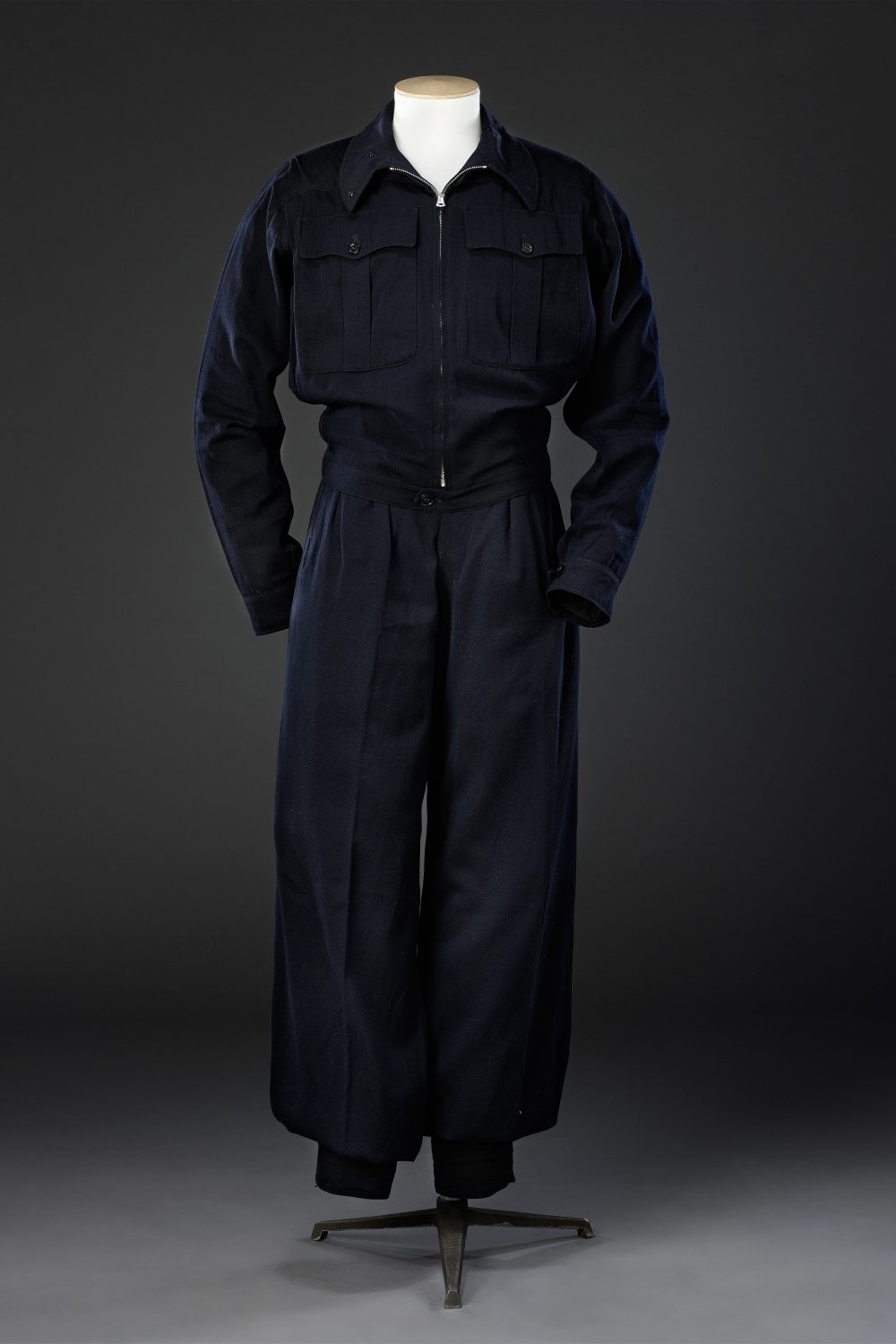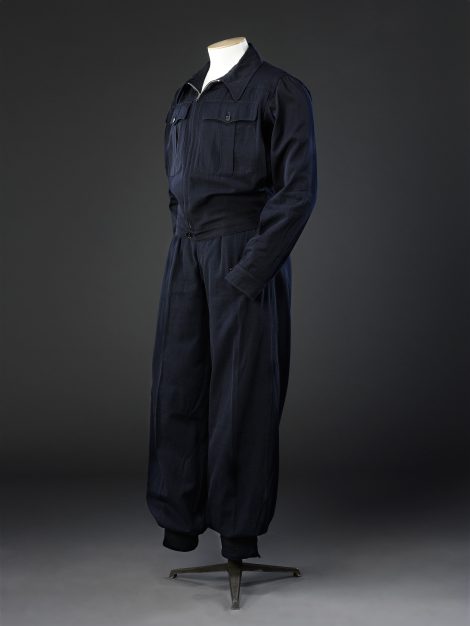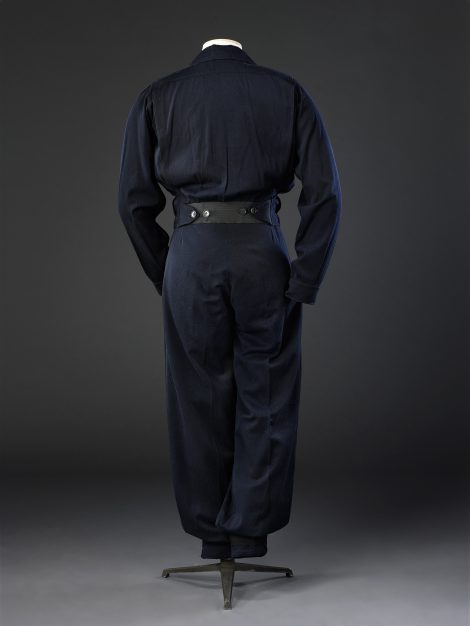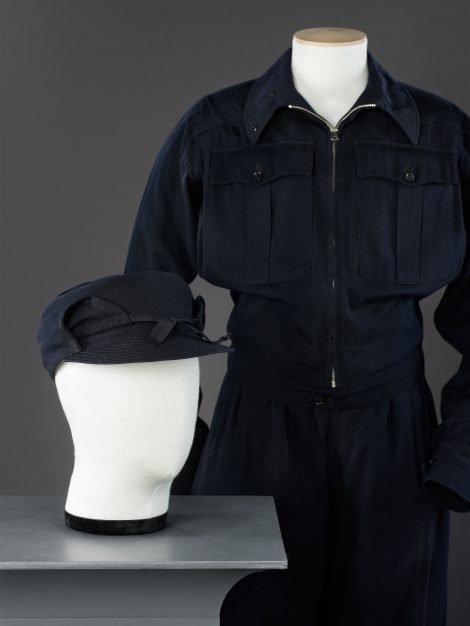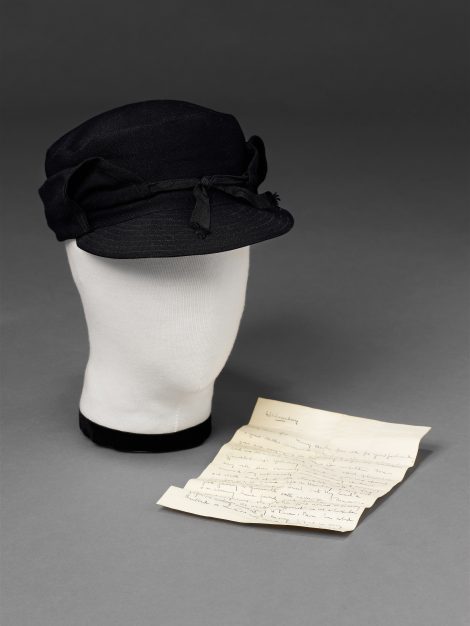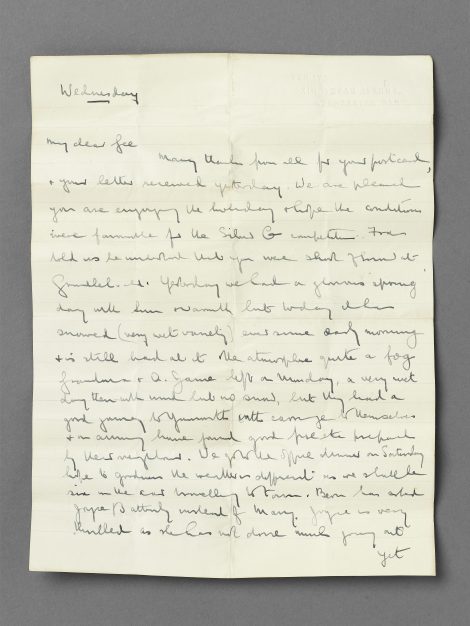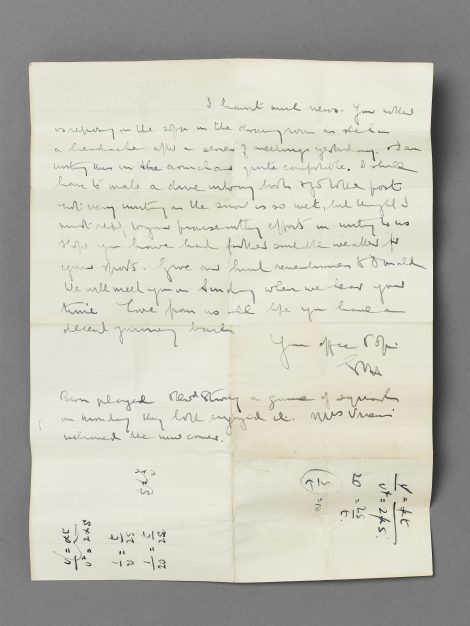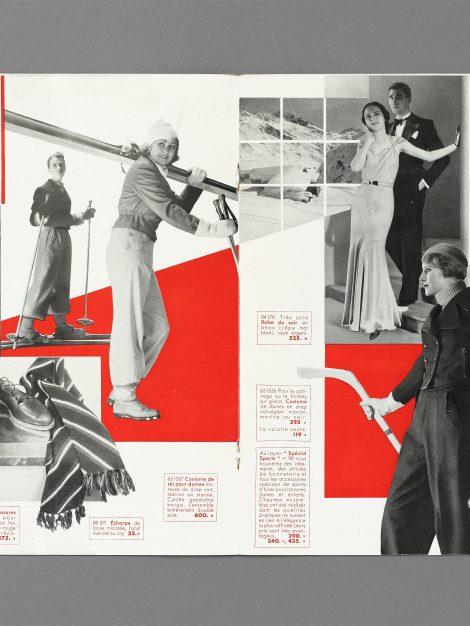The glamorous sport of Alpine skiing grew rapidly during the 1930s, both in Europe and the USA. No longer purely the preserve of the jet set, organisations such as the Ski Club of Great Britain arranged touring parties to teach the middle classes to ski.
This three-piece ski suit is made of navy wool gabardine, a popular choice as navy showed up well against the snow, and the smooth dense surface of gabardine was snow and moisture resistant and quick drying. It is unlined, relying upon layers of underclothing for warmth. The short blouson jacket protected the wearer from the elements with a zipped front fastening, fitted waist with elasticated back, adjustable cuffs, and a collar which could be turned up and fastened with press-studs. Personal items could be stored in the buttoned, flapped pockets. The full trousers have ankle cuffs tightened by a length of braid, their openings, as at the wrist, closed with godets to stop the snow getting in. The waistband has adjustable buckled straps, with belt loops and interior buttons for braces, ensuring the trousers stayed safely in place during energetic manoeuvres. The cap has a quilted interior and a section which could be pulled down for added protection. Together, the suit combines comfort, practicality and style.
A letter from the wearer’s father was found in one of the jacket pockets. It is addressed from Kingsmead Avenue, a road of large detached Mock Tudor houses, in the outer London suburb of Worcester Park, but unfortunately is undated. It concentrates mainly on favourite British topics of news – the weather and family arrangements; references to Gimmelwald, a small village in the Bernese Oberland area of Switzerland, suggest that the son was skiing in the Swiss Alps.
